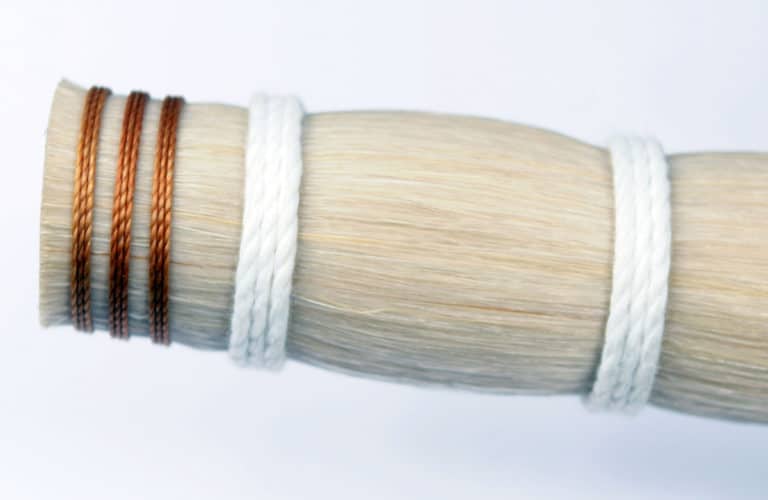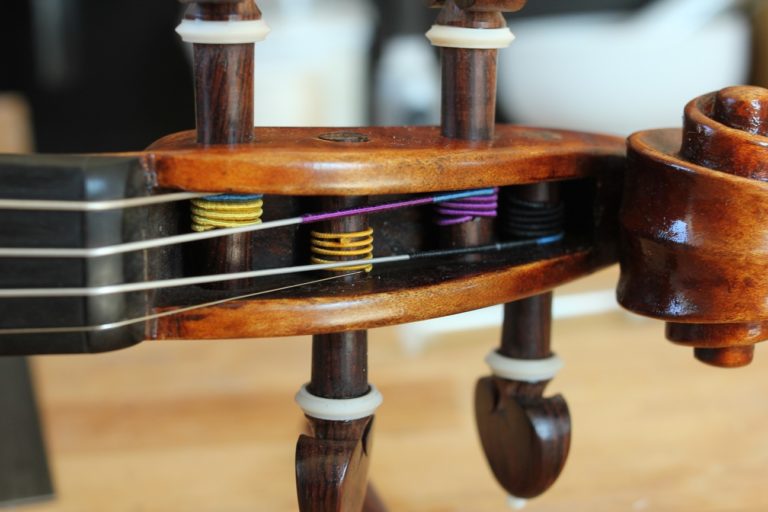The question of luthier wood for violins tends to come up frequently. I am often asked which species of wood are used to make violins, violas, and cellos. Although I could just answer in one sentence, as lutherie wood for violins typically refers to maple, spruce and ebony, let’s examine this question a little more closely.
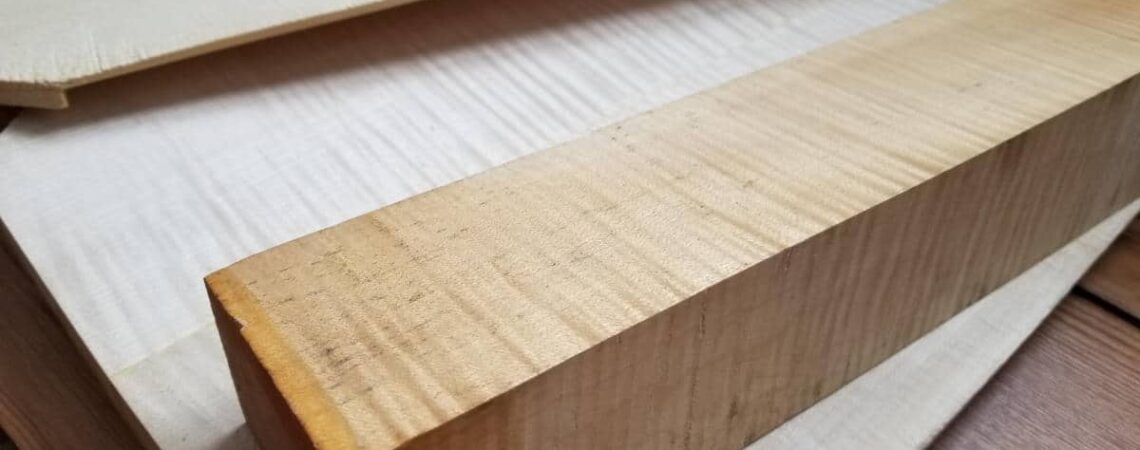
Purchasing luthier wood
If you are by any chance reading this article because you’re interested in purchasing wood to make an instrument, look no further. By clicking here, you can visit the luthier wood section of my shop. Don’t hesitate to contact me directly so that I can ensure you have what you need.
Classicism
It’s important to remind ourselves that the violin family stems from the classical movement of the 17th and 18th centuries. Just like the other arts born from this movement, the main focus was a quest for balance. For an instrument, this placed importance not only on its expressiveness and harmonic capacities, but also on its structure and symmetry. In accordance with these criteria, the lutherie of the classic violin family was born. Since the first violin appeared in Andrea Amati‘s workshop in the 16th century, the shapes, woods and techniques of violin making have barely changed at all.
Today, violins designed for a classical musicians can only be made of spruce and maple woods and are constructed in a very specific manner. Indeed, the instrument would lose its “classical” status if its shape or components were altered. In this case, it would simply be called a “violin-shaped instrument.”
Classical violin design allows very little room for creativity, but we can see some variations with cellos and violas. It is certainly not uncommon to find cellos made with more common wood species, which helps mitigate the use of large planks of maple, which are both scarce and costly.
As for the black sheep of the violin family, no one seems to mind experimentation when it comes to the viola. These instruments can be made with some of the most exotic wood species and the most controversial designs.
You will not however find mention of electric violins in this article, which represents yet another world of instruments altogether.
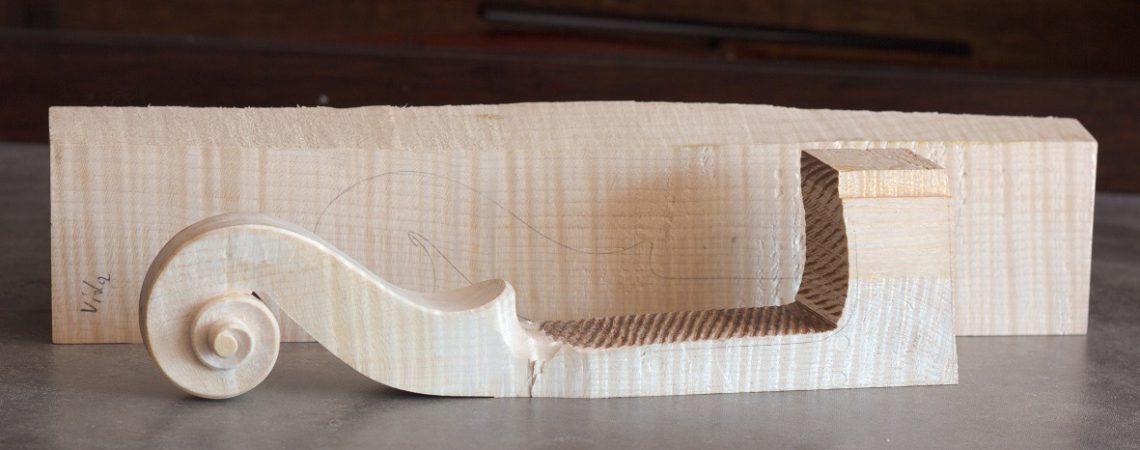
Luthier wood for violins
By definition, luthier wood is wood possessing the necessary qualities for the construction of acoustic instruments. There are specific ways in which these woods are treated. This includes:
- Timely harvesting: The wood must be harvested at its maturity and in winter, as the sap and nutrients are released from the trunk and accumulate in the roots during the cold months. This ensures that the wood is healthy, resonant and resilient.
- Precise sawing: The wood is sawed or split in the direction of the grain to promote optimal structural soundness, ensuring a symmetrical appearance for joint table or background pieces.
- Natural drying: Once the wood has been cut, it has to air dry for an extended period of time and when it’s stable, it can then be worked. A minimum of 5 years of drying is required, but the special KMG series uses boards that are over 200 years old.
- Calculated density: The density of the wood must be taken into account when making an instrument. We usually move aside pieces that are either too light or too heavy. In any event, the weight calculation will allow us to efficiently achieve the final thickness needed.
- The silhouette: Wood is above all chosen for its aesthetic qualities. It provides an important visual impact that will give a particular identity to each instrument. Large or small waves in the wood grain and other details in the wood make for beautiful instruments that come to life in the light (provided that the varnish was well applied).
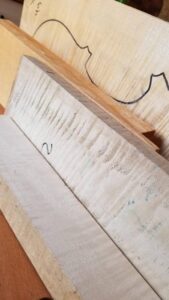
Luthier wood from Cremona
If you’d like to learn about the epic saga of luthier wood during the great era of Antonio Stradivari (Stradivarius) and Guarneri Del Gesù, I highly recommend the following article: Sound of Venice.
[blog_posts items=”1″ orderby=”date” ids=”406″]
Luthier wood species and their uses
Common species
Spruce (picea abies)
Spruce is a coniferous evergreen tree commonly found in the French Alps and in Eastern Europe. The trunks are relatively lightweight, but sturdy. These characteristics are appreciated by both carpenters and instrument makers.
The main quality of this wood lies in its growth rings: a succession of summer rings (wispy, soft and clear-colored) and winter rings (dense, rigid and dark-colored). These rings accumulate over the years in a circular pattern. Trees growing in mild climates have wide rings, which is why they are not used in artisanal violin making. On the contrary, trees that grow in rugged mountainous regions grow much more slowly. As a result, they have a more balanced growth, making them more suitable for instrument soundboards. In fact, the wood used today for violin making is sourced primarily from the Jura region of France as well as from the Italian and Bavarian Alps.
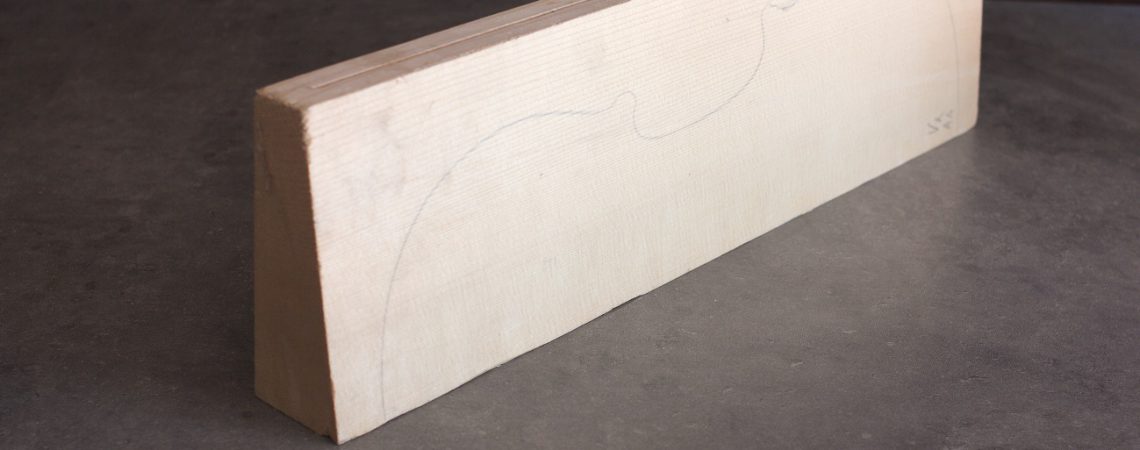
A spruce adequate for violin making must be free of defects (resin pockets, knots, etc.) and have balanced rings, which allows for the wood to be worked in a consistent way. It should also have certain acoustic qualities, including proper rigidity and density. This will allow the soundboard to resonate freely without the risk of collapsing under the weight of the strings. Finally, the full acoustic and structural potential of spruce is achieved when the wood is worked in the direction of the grain (after being split, not sawed).
Components of the violin that are made of spruce: the soundboard, bass bar, soundpost, blocks and linings.
Maple (acer)
Maple trees are found in most temperate regions of the world. They are all over Europe as well as in the north of the United States, or even in Asia as different subspecies. However, it is the European variety that dominates traditional violin making. The wood most sought out by violin makers is Bosnian maple. It grows in the mountainous forests of the Balkans and acquired a strong reputation with Cremonian luthiers during their golden age in the 17th and 18th centuries.
Even though it is a fairly common tree, very few of them are transformed into luthier wood. Not only does maple wood’s density and acoustic potential come into play, it is also highly considered for its aesthetic qualities. Maple with interesting waves or “flames” in the grain are selected, as it is considered a genetic singularity only found in about 1 in 800 trees.
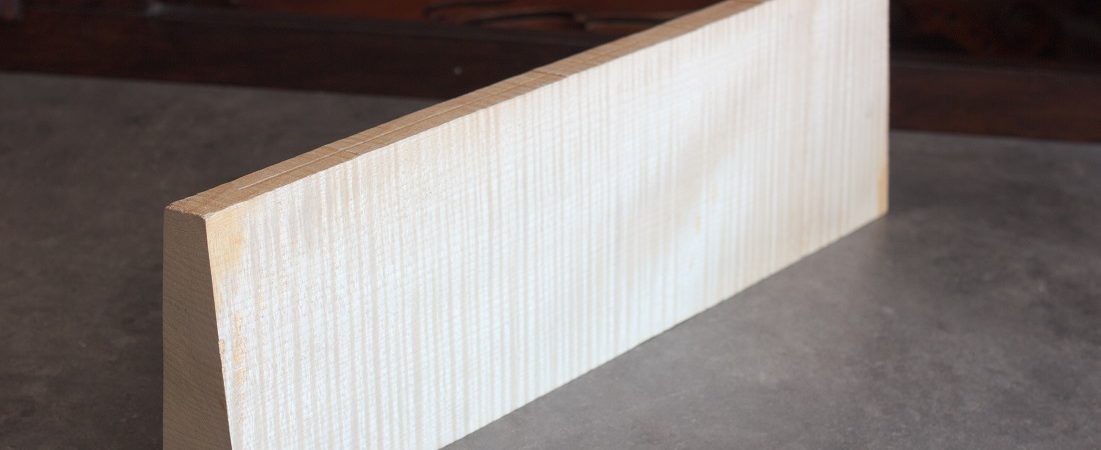
The majority of the violin is made of maple wood (typically the back, sides, neck and scroll). The bridge is also made of maple, but the selection method for the bridge adheres to a very different criteria than for the rest of the instrument.
Willow (salix)
Willow trees thrive in humid swamplands. It is a light and malleable wood that can replace spruce for the blocks and linings of the instrument.
Boxwood (buxus)
Buxus plants are slow-growing shrubs that can be found all over Europe. Mainly used to carve the components of the violin, such as the pegs, the button and the tailpiece, they can even for certain repairs.
Exotic wood species
Ebony (diospyros)
Ebony is very dense, richly colored wood imported from India, Africa, or Madagascar.
It replaced maple and bone on the fingerboards and saddles of Baroque violins. This wood type is considered even more resistant to wear and tear than metal strings (formerly gut strings).
Ebony is most often used on fingerboards and saddles. But pegs, buttons and other accessories can also be made from ebony.
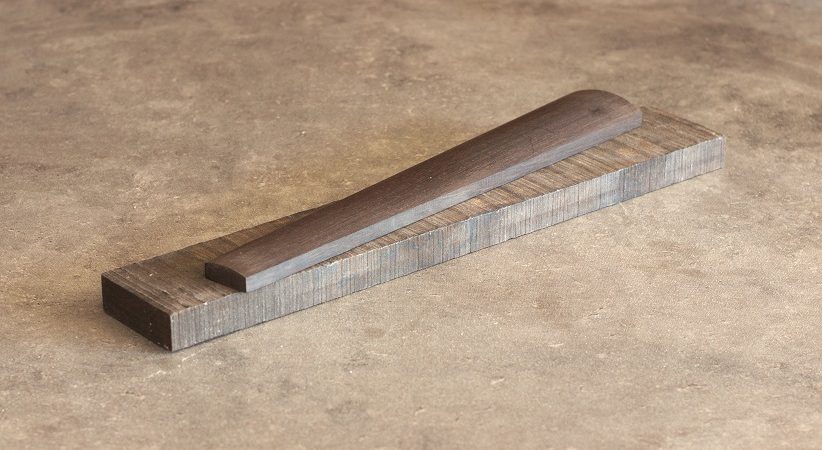
Rosewood (dalbergia)
Rosewood is another variety of exotic wood imported from India, Brazil or Madagascar. It is mainly use to turn pegs and end buttons, as well as to carve tailpieces and chin rests.
Future violin making materials
In recent years, there has been a resurgence in the materials used to craft violins. These materials, often man-made, have been created to protect resources that are too expensive or too scarce. Thus, we have witnessed a development of synthetic ivory, ebony and pernambuco in instrument workshops.
Carbon is among the most popular alternatives to wood. Indeed, it is a rather light and sturdy material that is quite easy to work with; a kind of “super wood.” On paper, carbon fiber seems ideal for acoustic use, offering good performance for a low price. So much so, that many carbon instruments and bows have in fact appeared on the market.

On this topic, it is rather simple nowadays to obtain ebonite. It is a surprisingly good substitute for ebony as it can be carved just like natural wood. The same can be said for ivory and synthetic bone.
Let me conclude here with a question: Do you think that modern materials will one day be able to completely replace natural materials as we know them?

